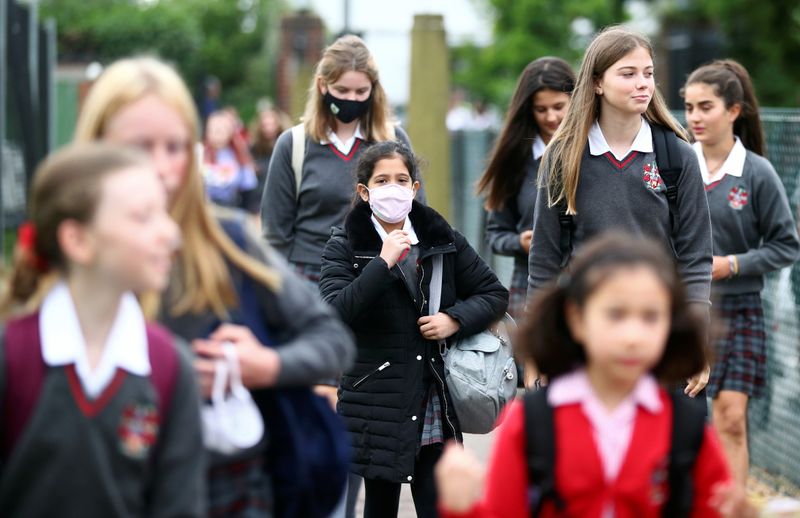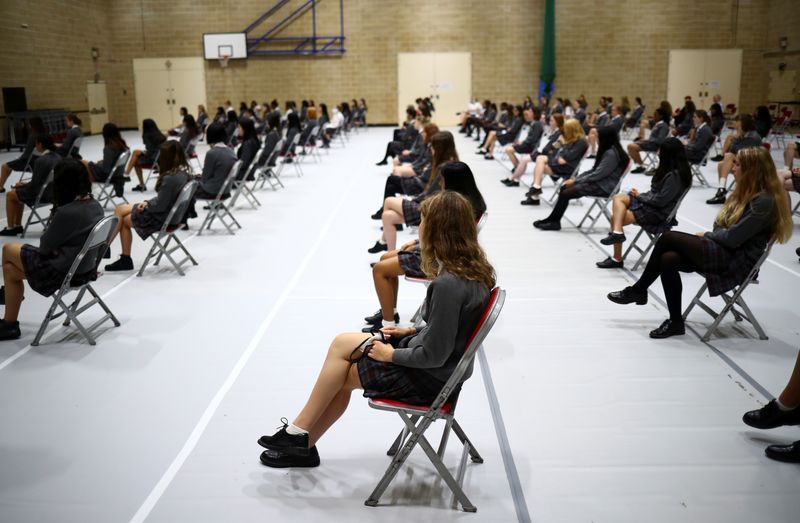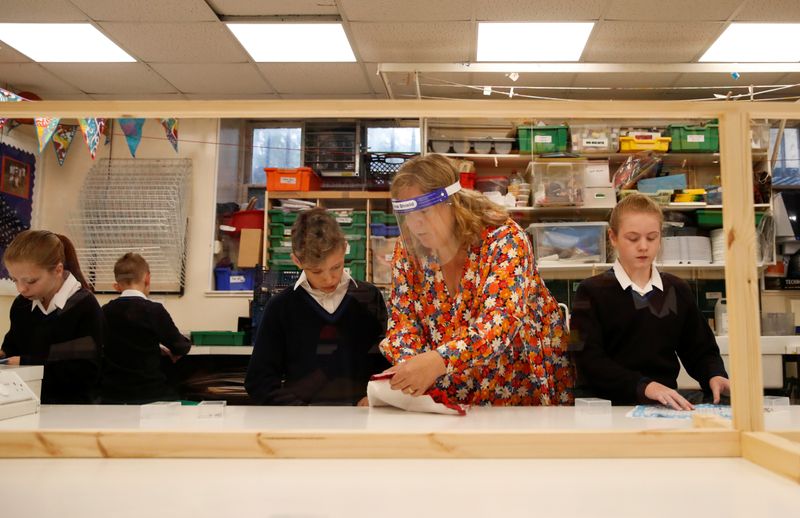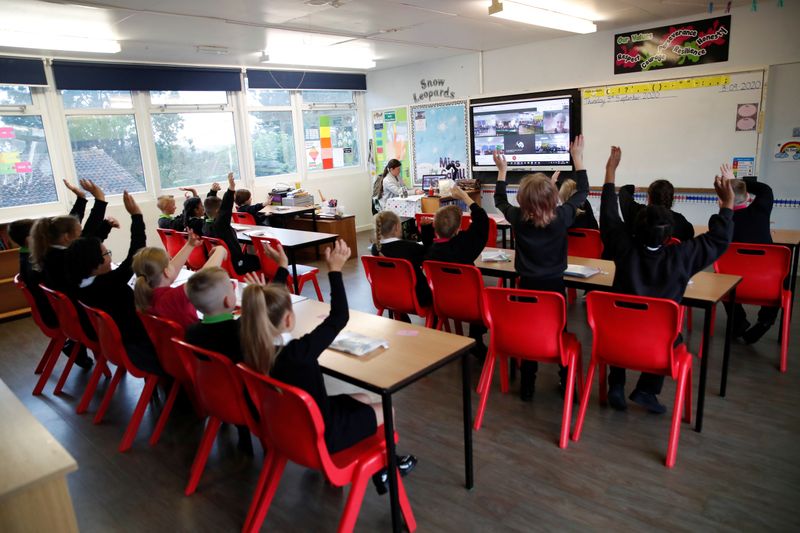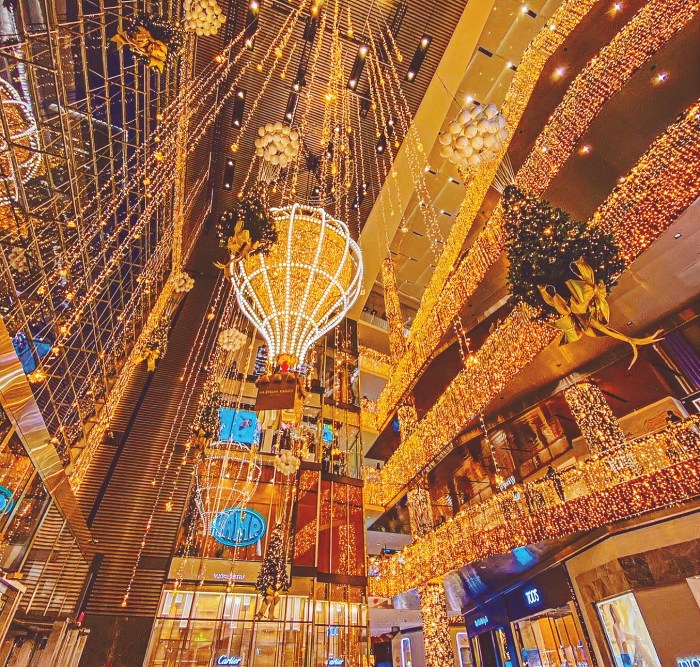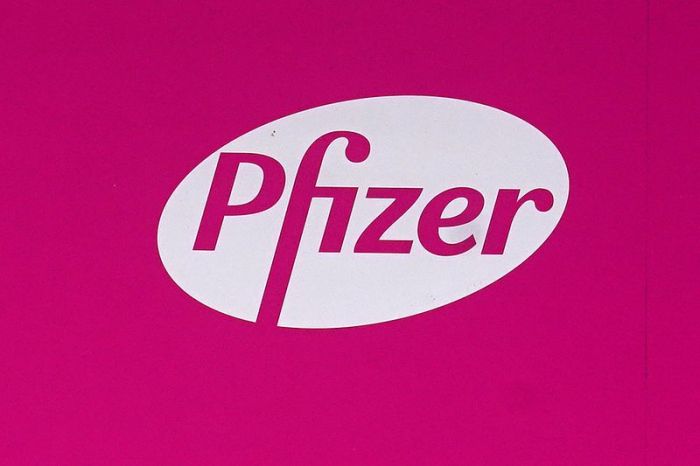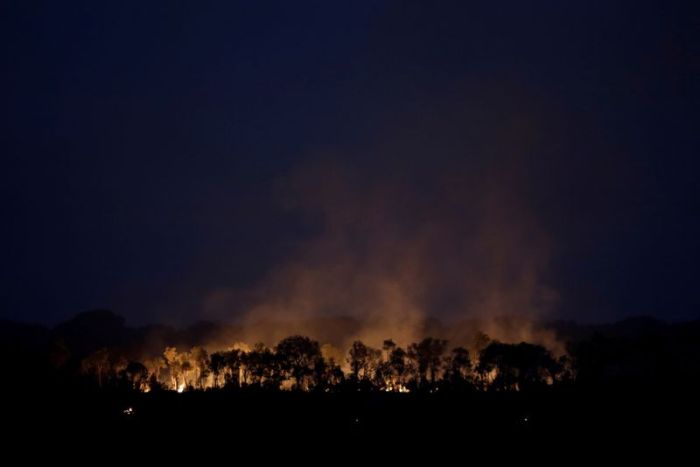LONDON (Reuters) – Primary school children returning to the Harris Academy in London on Thursday will find themselves sitting in rows, regularly washing their hands and supported by teachers who have been trained to provide emotional support after lockdown.
Children started to return to schools this week – for many the first time they have been back in full-time education since the spread of COVID-19 forced classes to shut in March.
To prevent large gatherings, schools are staggering arrivals, keeping pupils in smaller groups, controlling where they walk in communal areas and requiring the provision of water bottles and pencil cases to prevent sharing. Desks are likely to be placed in rows so pupils do not sit in groups on a table.
Sam French, executive principal at Harris Academy, said the staff were delighted to be back and while there have been many challenges, they wanted the school to look as normal as before.
“We’ve done our very best to keep (the challenges) at our level so when the children came back today, as far as possible they were coming back to the school that they left in March,” she told Reuters, over the sound of pupils in the playground.
Children were greeted by a teacher providing hand sanitizer when they arrived to an archway of balloons on Thursday.
While schools kept in touch with pupils during lockdown and provided regular work, teachers will now need to use the first term to assess how many children have fallen behind, and how many have pulled ahead in their learning.
“These first few weeks are just about finding out where the gaps are, finding out where the strengths are and then building, so that by October half-term we’re all back where we need to be and we can continue with the year,” French said.
Prime Minister Boris Johnson’s government is under pressure to ensure that schools can stay open after the long break and following a debacle over estimated exam results that affected whether some students went to university this year.
(Reporting by Will Russell; editing by Stephen Addison)

